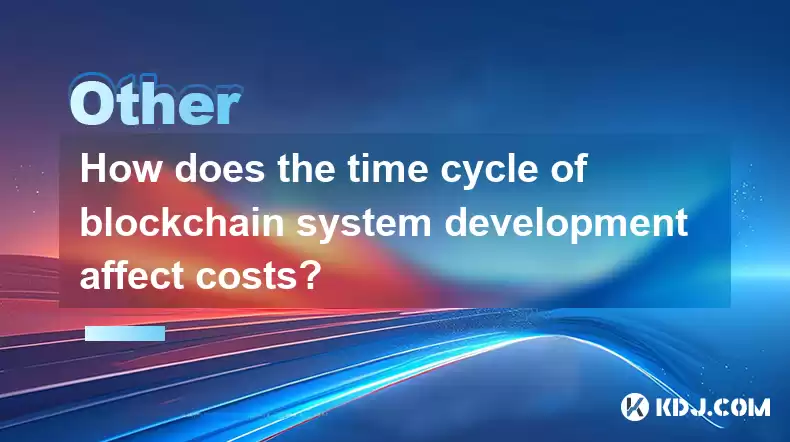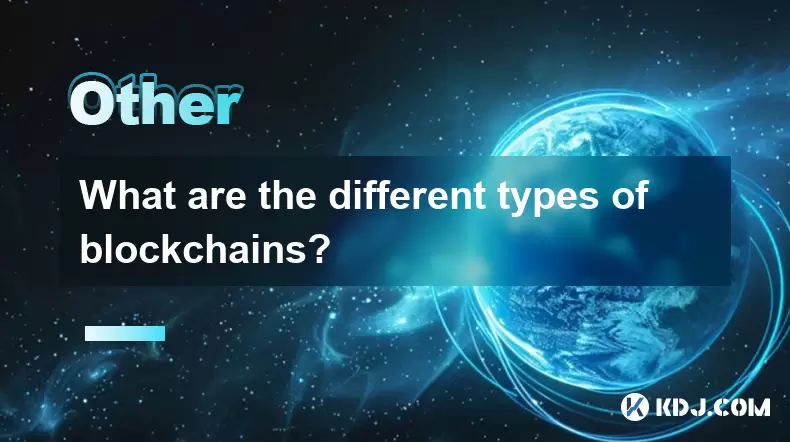-
 Bitcoin
Bitcoin $112400
-1.07% -
 Ethereum
Ethereum $3409
-3.27% -
 XRP
XRP $2.784
-6.60% -
 Tether USDt
Tether USDt $0.9997
-0.03% -
 BNB
BNB $739.3
-2.09% -
 Solana
Solana $158.0
-2.90% -
 USDC
USDC $0.9998
-0.02% -
 TRON
TRON $0.3213
-0.94% -
 Dogecoin
Dogecoin $0.1929
-5.01% -
 Cardano
Cardano $0.6974
-2.82% -
 Hyperliquid
Hyperliquid $36.69
-2.31% -
 Sui
Sui $3.327
-4.80% -
 Stellar
Stellar $0.3672
-5.18% -
 Chainlink
Chainlink $15.65
-3.07% -
 Bitcoin Cash
Bitcoin Cash $525.0
-1.68% -
 Hedera
Hedera $0.2291
-6.00% -
 Avalanche
Avalanche $20.91
-2.96% -
 Ethena USDe
Ethena USDe $1.000
0.00% -
 Toncoin
Toncoin $3.520
-1.12% -
 UNUS SED LEO
UNUS SED LEO $8.968
0.14% -
 Litecoin
Litecoin $105.7
0.26% -
 Shiba Inu
Shiba Inu $0.00001181
-1.79% -
 Polkadot
Polkadot $3.492
-2.08% -
 Uniswap
Uniswap $8.800
-3.10% -
 Dai
Dai $0.9999
-0.01% -
 Monero
Monero $289.9
-3.17% -
 Bitget Token
Bitget Token $4.243
-1.27% -
 Pepe
Pepe $0.00001006
-3.67% -
 Cronos
Cronos $0.1248
-5.68% -
 Aave
Aave $249.7
-2.50%
How does the time cycle of blockchain system development affect costs?
The time spent on each phase of blockchain development, from research to maintenance, significantly impacts costs, requiring careful planning to manage expenses effectively.
Apr 19, 2025 at 01:14 pm

The development of a blockchain system is a complex process that involves multiple stages, each with its own set of challenges and costs. Understanding how the time cycle of blockchain system development affects costs is crucial for project managers and stakeholders. This article delves into the various phases of blockchain development, the time required for each, and how these factors influence the overall cost of the project.
Initial Research and Planning Phase
The initial research and planning phase is the foundation of any blockchain project. During this stage, developers and stakeholders conduct thorough research to understand the specific requirements of the project. This includes studying existing blockchain technologies, identifying the target audience, and defining the project's goals and objectives.
Time Impact on Costs: The duration of the initial research and planning phase can significantly affect the project's costs. A longer research phase allows for a more comprehensive understanding of the project's needs, which can lead to a more efficient development process. However, extended research can also increase costs due to the time spent by the team.
Cost Considerations: During this phase, costs are primarily associated with the salaries of the research team, any external consultants hired, and the resources used for market analysis and feasibility studies. A well-planned research phase can help in identifying potential cost-saving measures early on, such as choosing the right blockchain platform or technology stack.
Design and Architecture Phase
Once the initial research is complete, the project moves into the design and architecture phase. This stage involves creating detailed blueprints of the blockchain system, including the network architecture, smart contract design, and user interface.
Time Impact on Costs: The time spent on design and architecture directly impacts the project's costs. A thorough design phase can prevent costly mistakes during development, but it also requires significant time and resources. Rushing through this phase can lead to design flaws that are expensive to fix later.
Cost Considerations: Costs during this phase include the salaries of the design team, software tools used for modeling and prototyping, and any external design consultants. Investing in a robust design can save money in the long run by reducing the need for extensive revisions during the development phase.
Development and Implementation Phase
The development and implementation phase is where the actual coding and building of the blockchain system take place. This stage involves writing smart contracts, developing the backend and frontend, and integrating various components of the system.
Time Impact on Costs: The duration of the development phase is a critical factor in determining the overall cost of the project. Longer development times can increase costs due to extended salaries and resource usage. However, rushing the development can lead to bugs and security vulnerabilities, which can be even more costly to address post-launch.
Cost Considerations: Costs during this phase include the salaries of developers, the cost of development tools and software, and any cloud services used for testing and deployment. Efficient project management and agile development practices can help in keeping the development phase within budget and on schedule.
Testing and Quality Assurance Phase
After the development phase, the project enters the testing and quality assurance phase. This stage involves rigorous testing of the blockchain system to ensure it meets the required standards for performance, security, and functionality.
Time Impact on Costs: The time spent on testing and quality assurance can significantly affect the project's costs. Thorough testing can prevent costly issues after the system goes live, but it also requires time and resources. Cutting corners on testing can lead to expensive fixes and potential security breaches.
Cost Considerations: Costs during this phase include the salaries of the testing team, the cost of testing tools and environments, and any external security audits. Investing in comprehensive testing can save money by identifying and fixing issues before the system is deployed.
Deployment and Maintenance Phase
The final phase of blockchain system development is the deployment and maintenance phase. This stage involves launching the system and providing ongoing support and updates.
Time Impact on Costs: The time required for deployment and maintenance can impact the project's costs. A smooth deployment can minimize downtime and associated costs, while ongoing maintenance ensures the system remains secure and functional. However, extended maintenance periods can increase costs due to the need for continuous support and updates.
Cost Considerations: Costs during this phase include the salaries of the deployment and maintenance team, the cost of hosting and infrastructure, and any updates or patches required. Efficient deployment and maintenance strategies can help in managing these costs effectively.
FAQs
Q: How can project managers mitigate the impact of time on costs during blockchain development?
A: Project managers can mitigate the impact of time on costs by implementing efficient project management practices, such as agile development methodologies, regular progress reviews, and clear communication with the team. Additionally, setting realistic timelines and allocating resources effectively can help in keeping the project within budget.
Q: What are some common pitfalls that can increase costs during the blockchain development process?
A: Common pitfalls that can increase costs include inadequate initial research, rushed design and architecture phases, insufficient testing, and poor project management. These issues can lead to costly mistakes and delays that could have been avoided with proper planning and execution.
Q: How does the choice of blockchain platform affect the time and cost of development?
A: The choice of blockchain platform can significantly impact the time and cost of development. Some platforms, like Ethereum, have a large ecosystem and extensive documentation, which can speed up development but may also come with higher transaction costs. Other platforms, like Hyperledger Fabric, are more suited for enterprise solutions and may require more time for setup but can offer better performance and scalability.
Q: Can outsourcing parts of the blockchain development process help in managing costs?
A: Outsourcing parts of the blockchain development process can help in managing costs by leveraging the expertise of specialized firms or freelancers. However, it is essential to carefully select outsourcing partners and clearly define the scope of work to avoid misunderstandings and additional costs.
Disclaimer:info@kdj.com
The information provided is not trading advice. kdj.com does not assume any responsibility for any investments made based on the information provided in this article. Cryptocurrencies are highly volatile and it is highly recommended that you invest with caution after thorough research!
If you believe that the content used on this website infringes your copyright, please contact us immediately (info@kdj.com) and we will delete it promptly.
- Grayscale, Altcoin Trust, and Mid-Cap Mania: What's the Deal?
- 2025-08-03 08:50:16
- XRP, ADA, and the Altcoin Evolution: What's Hot and What's Next
- 2025-08-03 08:30:16
- HBAR Price Check: Will Monthly Gains Hold at This Resistance Level?
- 2025-08-03 08:30:16
- Bitcoin, Cryptos, and Retirees: A New Era of Investment?
- 2025-08-03 08:50:16
- BlockDAG's Presale Power & Active Miners: A New York Minute on Crypto's Hottest Trend
- 2025-08-03 08:55:25
- BlockDAG Presale Heats Up: SUBBD Trails as Innovation Meets Execution
- 2025-08-03 09:00:16
Related knowledge

What is the difference between on-chain and off-chain transactions?
Aug 02,2025 at 04:22pm
Understanding On-Chain TransactionsOn-chain transactions refer to digital asset transfers that are recorded directly on a blockchain ledger. These tra...

What is the double-spending problem and how does blockchain prevent it?
Aug 02,2025 at 01:07pm
Understanding the Double-Spending ProblemThe double-spending problem is a fundamental challenge in digital currency systems where the same digital tok...

What is the difference between a blockchain and a database?
Aug 01,2025 at 09:36pm
Understanding the Core Structure of a BlockchainA blockchain is a decentralized digital ledger that records data in a series of immutable blocks linke...

How does blockchain handle scalability?
Aug 02,2025 at 02:58pm
Understanding Blockchain Scalability ChallengesBlockchain scalability refers to a network's ability to handle an increasing volume of transactions wit...

What are the different types of blockchains?
Aug 03,2025 at 03:01am
Public Blockchains: Open and Decentralized NetworksPublic blockchains are the most widely recognized type of blockchain, characterized by their open a...

What is a hash in a blockchain?
Aug 02,2025 at 05:28am
Understanding the Concept of Hash in BlockchainA hash in the context of blockchain technology refers to a unique digital fingerprint generated by a cr...

What is the difference between on-chain and off-chain transactions?
Aug 02,2025 at 04:22pm
Understanding On-Chain TransactionsOn-chain transactions refer to digital asset transfers that are recorded directly on a blockchain ledger. These tra...

What is the double-spending problem and how does blockchain prevent it?
Aug 02,2025 at 01:07pm
Understanding the Double-Spending ProblemThe double-spending problem is a fundamental challenge in digital currency systems where the same digital tok...

What is the difference between a blockchain and a database?
Aug 01,2025 at 09:36pm
Understanding the Core Structure of a BlockchainA blockchain is a decentralized digital ledger that records data in a series of immutable blocks linke...

How does blockchain handle scalability?
Aug 02,2025 at 02:58pm
Understanding Blockchain Scalability ChallengesBlockchain scalability refers to a network's ability to handle an increasing volume of transactions wit...

What are the different types of blockchains?
Aug 03,2025 at 03:01am
Public Blockchains: Open and Decentralized NetworksPublic blockchains are the most widely recognized type of blockchain, characterized by their open a...

What is a hash in a blockchain?
Aug 02,2025 at 05:28am
Understanding the Concept of Hash in BlockchainA hash in the context of blockchain technology refers to a unique digital fingerprint generated by a cr...
See all articles

























































































